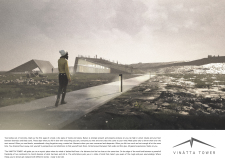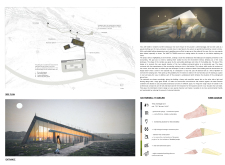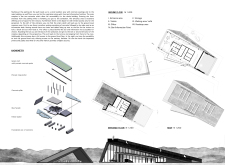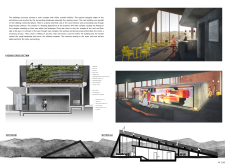5 key facts about this project
The design of Vinátta Tower prioritizes ecological sustainability through the use of locally sourced materials and energy-efficient systems. This approach reduces the environmental impact while promoting a conversation between architecture and nature. Key materials include concrete, precast concrete parts, glass, and integrated vegetation, all selected for their functional and environmental performance. The incorporation of a green roof is particularly noteworthy, as it enhances thermal insulation and supports biodiversity.
Sustainability and Site Integration
One of the distinguishing elements of the Vinátta Tower is its careful integration within the Icelandic landscape. The triangular shapes of the structure echo the geological formations typical of the region, emphasizing the dialogue between the interior and exterior environments. Large expanses of glass facilitate unobstructed views of the dramatic landscape, ensuring that visitors remain connected to the natural setting. The thoughtful landscaping surrounding the structure enhances accessibility while maintaining the integrity of the ecosystem.
Moreover, the architectural design adheres to principles of sustainability. The building is equipped with energy-efficient features, such as a geothermal heating system, which minimizes reliance on non-renewable energy sources. Sustainable water management is incorporated through a biological sewage treatment system, contributing to the sustainability goals of the project.
Interior Design and Visitor Experience
The interior layout of the Vinátta Tower is focused on user experience and functionality. The entrance area is designed for easy access, leading to key amenities including restrooms and information points for visitors. The café and waiting areas are positioned to maximize comfort and views, allowing visitors to enjoy refreshments while absorbing the surrounding scenery.
A key feature is the observation deck, strategically placed to provide panoramic vistas of the landscape, enhancing the overall visitor experience. By offering areas for relaxation and reflection, the design encourages visitors to engage with their surroundings, fostering a deeper understanding and appreciation of the natural environment.
For a comprehensive understanding of the Vinátta Tower and its architectural designs, readers are encouraged to explore detailed architectural plans, sections, and additional project presentations to appreciate the innovative approaches that distinguish this project in contemporary architecture.


























